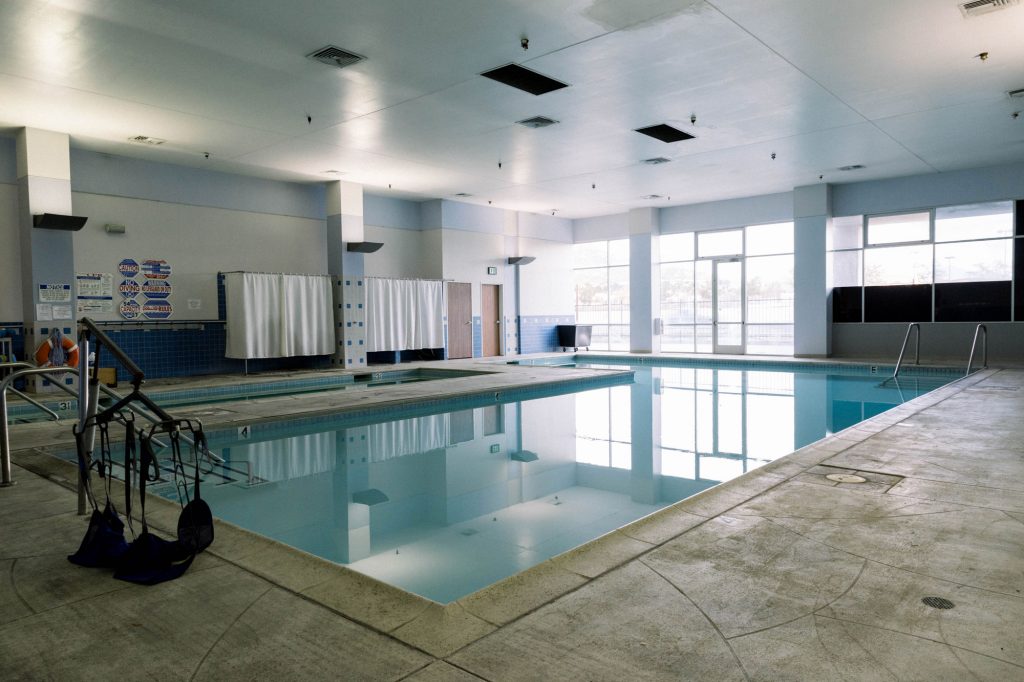
One benefit of aquatic therapy is the buoyancy provided by the water. While submerged in water, buoyancy assists in supporting the weight of the patient. This decreases the amount of weight bearing which reduces the force of stress placed on the joints. This aspect of aquatic therapy is especially useful for patients with arthritis , healing fractured bones, or who are overweight. By decreasing the amount of joint stress it is easier and less painful to perform exercises.
The viscosity of water provides an excellent source of resistance that can be easily incorporated into an aquatic therapy exercise program. This resistance allows for muscle strengthening without the need for weights. Using resistance coupled with the water’s buoyancy allows a person to strengthen muscle groups with decreased joint stress that can not be experienced on land.
Aquatic therapy also utilizes hydrostatic pressure to decrease swelling and improve joint position awareness. The hydrostatic pressure produces forces perpendicular to the body’s surface. This pressure provides joint positional awareness to the patient. As a result, patient proprioception is improved. This is important for patients who have experienced joint sprains, as when ligaments are torn, our proprioception becomes decreased. The hydrostatic pressure also assists in decreasing joint and soft tissue swelling that results in injury or with arthritic disorders.
Lastly, the warmth of the water experience during aquatic therapy assists in relaxing muscles and vasodilates vessels, increasing blood flow to injured areas. Patients with muscle spasms, back pain, and fibromyalgia find this aspect of aquatic therapy especially therapeutic.
Schedule an appointment today to consult with one of
our expert physical therapy specialists by calling 951-413-0219.
The Benefits of Aquatic Therapy
-
1. It’s Effective
Healing will begin as soon as after the first session. Each spinal decompression session lasts about 30 to 45 minutes long depending on the severity, and is recommended to be done around 15 to 30 times over a six-week period. A harness is used to gently stretch the spine, which opens each pressure filled disc and allows for oxygen and fluids to flow – immediately relieving pain.
-
2. It’s Safe
With no need for surgery or drugs, spinal decompression can be a safer alternative than other treatment methods. The chances of being injured during this process are zero to none, so there’s no fear or anxiety before-hand like there would be before going into an operating room.
-
3. It's Painless
Enjoy a completely painless and relaxing treatment. During a spinal decompression session, a harness is gently fastened around the hips while you are positioned on a decompression table, which slowly moves vertically to stretch the spine. This process can be very relaxing as pressure is relieved between each vertebra.
-
4. It's Cost Effective
Compared to surgery, spinal decompression is a much less costly option with a quick recovery time. Spinal surgery can cost tens of thousands of dollars, and has a chance of not being 100% effective. Spinal decompression will also allow for a full recovery of disc problems with speedy recovery, medication free. Surgery requires a long recovery process and pain medication, often leading to negative side effects.
-
5. Fewer Side Effects
Although rare, spinal decompression side effects may include minor muscle spasms and slight pain, whereas side effects of spinal surgery can include bleeding, infection, negative reaction to drugs, stroke, heart attack or nerve damage. It’s safe to say that spinal decompression treatment is a better option when available.
